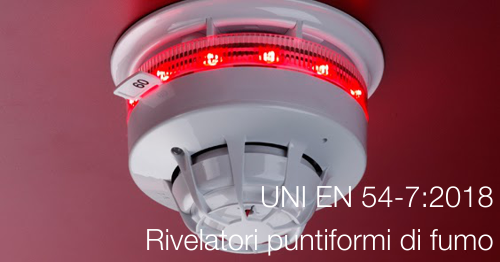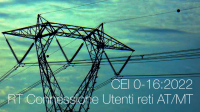UNI EN 54-7:2018 | Rivelatori puntiformi di fumo
| ID 6896 | | Visite: 10180 | News Impianti | Permalink: https://www.certifico.com/id/6896 |
UNI EN 54-7:2018 | Rivelatori puntiformi di fumo
Sistemi di rivelazione e di segnalazione d'incendio - Parte 7: Rivelatori di fumo - Rivelatori puntiformi di fumo funzionanti secondo il principio della diffusione della luce, della trasmissione della luce o della ionizzazione
Data entrata in vigore: 27 settembre 2018
La norma specifica i requisiti, i metodi di prova e i criteri prestazionali per rivelatori puntuali di fumo funzionanti secondo il principio della diffusione della luce, della trasmissione della luce o della ionizzazione da utilizzare per i sistemi di rivelazione e di segnalazione di incendio installati all'interno o intorno all'edificio. La norma contiene le disposizioni per l'AVCP e la marcatura CE dei prodotti.
La norma può essere utilizzata come linea guida per gli altri tipi di rivelatori di fumo o i rivelatori di fumo che funzionano secondo principi differenti. Rivelatori di fumo con caratteristiche speciali e sviluppati per rischi specifici non sono trattati dalla norma.
http://store.uni.com/catalogo/index.php/uni-en-54-7-2018.html
Recepisce: EN 54-7:2018
Sostituisce: UNI EN 54-7:2007
________
Preview EN 54-7:2018 Riservato Abbonati
EN 54-7:2018 - Fire detection and fire alarm systems - Part 7: Smoke detectors - Point smoke detectors that operate using scattered light, transmitted light or ionization
This draft European Standard specifies requirements, test methods and performance criteria for point smoke detectors that operate using scattered light, transmitted light or ionization, intended for use in fire detection and fire alarm systems installed in and around buildings (see EN 54 1:2011). This European standard provides for the assessment of verification of consistency of performance (AVCP) of point smoke detectors to this EN.
For other types of smoke detector, or smoke detectors working on different principles, this standard should only be used for guidance. Smoke detectors with special characteristics and developed for specific risks are not covered by this standard.
NOTE Certain types of detector contain radioactive materials. The national requirements for radiation protection differ from country to country and they are not specified in this standard.
...
Fonte:UNI
EVS
Collegati:
| Descrizione | Livello | Dimensione | Downloads | |
|---|---|---|---|---|
| Preview Preview EN 54-7 2018.pdf |
83 kB | 17 |
Tags: Normazione Impianti Norme UNI Abbonati Impianti Impianti antincendio










































